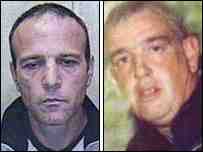Former scrap metal dealer David Morris, from Craig Cefn Parc in the Swansea Valley, South Wales, denied four charges of murder, but was found guilty and given four life sentences.
Morris had bludgeoned to death, Mandy Power, 34, her invalid mother Doris Dawson, 80, and daughters Katie, 10, and Emily, eight, were found battered to death at their home in Kelvin Road, Clydach, on the night of 27th June 1999.
Sentencing him to life imprisonment, the judge his honour Mr Justice McKinnon spoke about the “exceptional savagery” of the killings. He told Morris: “Life should mean life and you should never be released.” It was the second time Morris had been found guilty of the murders. His original conviction at Swansea Crown Court in 2002 was quashed on appeal.
The three-month retrial in August 2006 at Newport Crown Court heard that Morris had been drinking and taking drugs when he went to Mandy’s home and attacked her. The jury had heard how the massacre at Kelvin Road, began when Mrs Power rejected Morris's advances for sex.
They heard that Mrs Power had begun a lesbian affair with a former policewoman and did not want to sleep with him again. Morris flew into a rage. It is thought that one of her daughters brought an iron bar to Mandy so she could defend herself. Morris then grabbed it and bludgeoned the mum repeatedly on the head and face, he embarked on what the jury heard described as an "orgy of savagery". Patrick Harrington QC, prosecuting, said Mrs Power alone had been beaten 38 times with the murder weapon. Doris Dawson was murdered as she lay in bed. One of the children's bodies lay on the landing. Another was found in their bedroom, still in a cowering position. After all four victims were dead, Morris stripped Mandy and violated her body. He then set the house on fire in a bid to cover his tracks. Mr Harrington said it was Wales’s worst ever murders. He added: “It was the worst type of massacre – there was carnage.”
David Morris was caught after a bloodstained gold necklace, ripped from his neck during the murders, was found in the victims house by forensic scientists. Paint found on the jewellery exactly matched paint found on kitchen units at Morris' home.
In police interviews, he insisted the chain did not belong to him - only to later change his story and admit it did. The jury had been told that Mrs Power had spoken about how much Morris frightened her, and had previously been beaten by him. Morris had almost two dozen previous convictions for robbery and violence.




